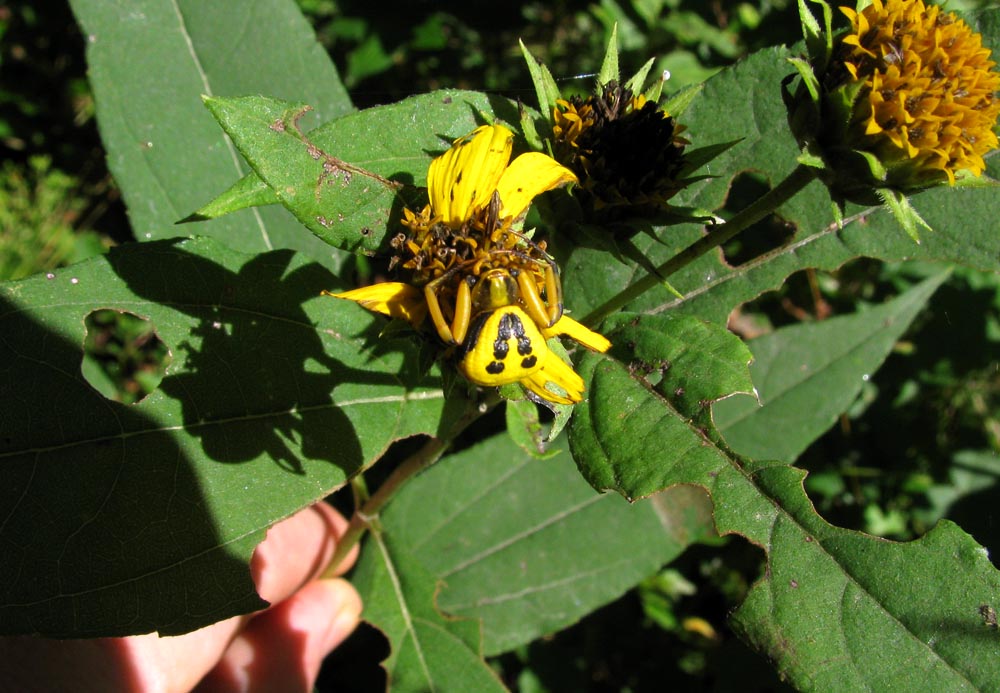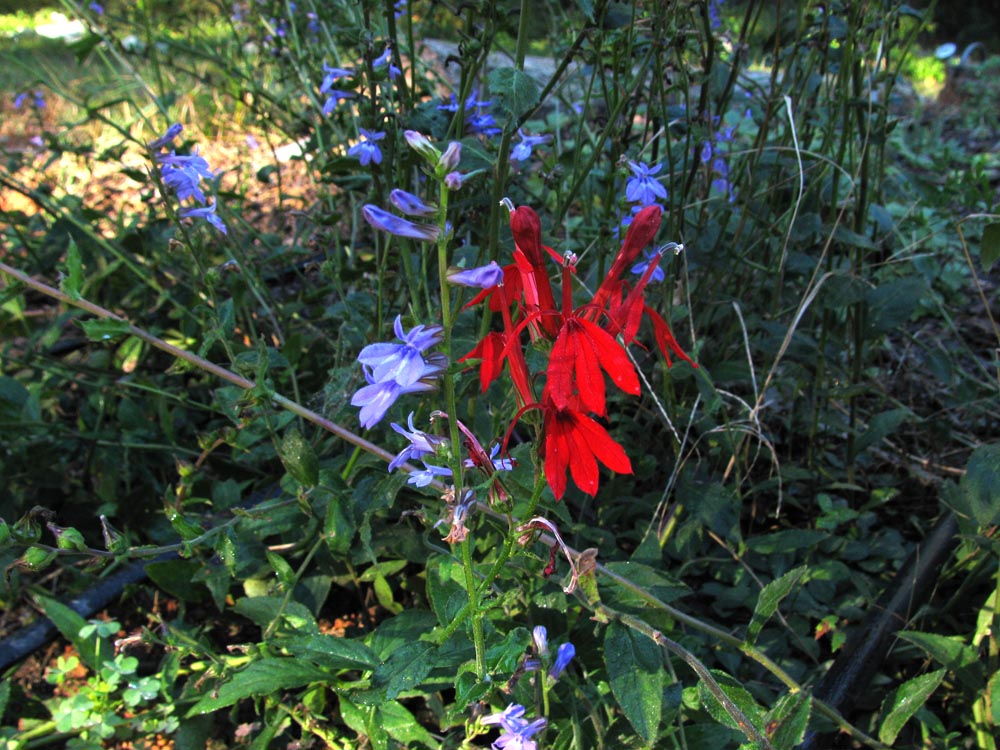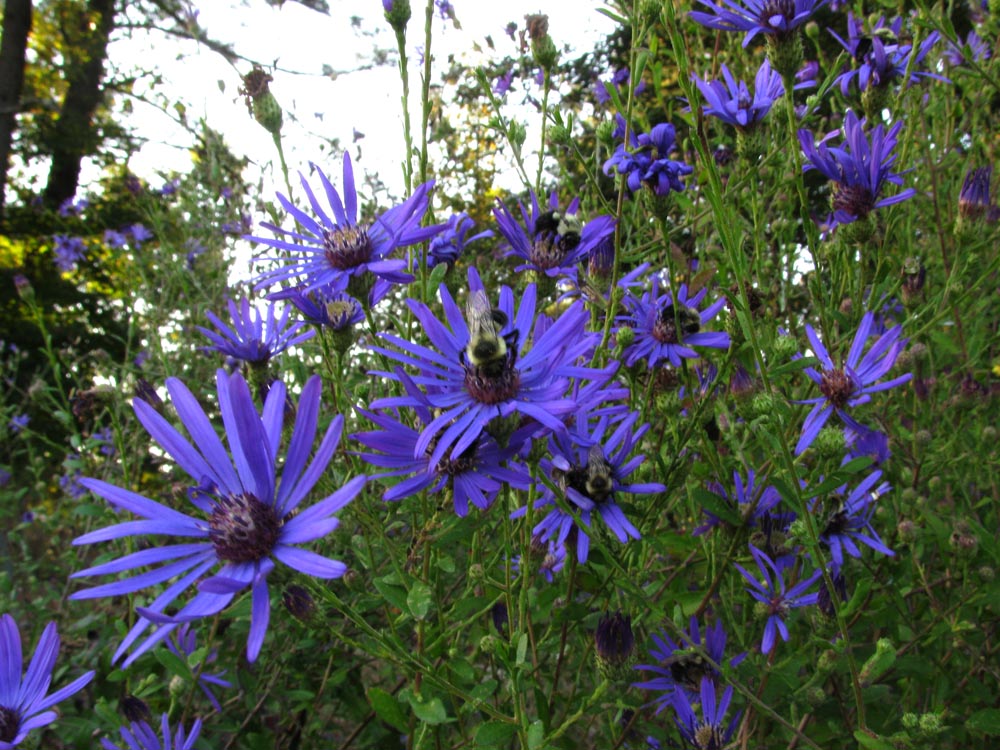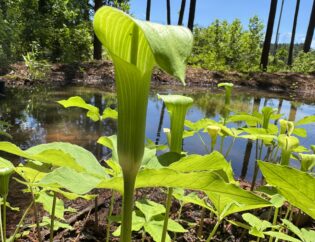
Finally saw a Monarch Butterfly this year. Monarchs are in serious trouble, so plant some Milkweed (Asclepias spp.) and help them out. (edit: not a Monarch, but a look-alike, the Viceroy (Limenitis archippus) as evidenced by the diagonal black lines on the hind wings.)
Pandra and I saw this when we were hiking a few weeks ago:
Looks like a Sunflower bloom that’s seen better days, right? Look closer:
It’s a spider. Lying in wait for some unsuspecting pollinator that might think it’s part of the flower!
Spiders are amazing at trapping other insects for dinner. This was in the barn:
It’s in a basket where we hang seeds we’ve collected to dry. I guess the bee was looking for the flower heads in the bags, but it found this relatively tiny spider and her web. She managed to subdue it and earned her dinner for weeks.
One more example of insect brutality and then some flower pictures:
This caterpillar was trying to make its way along the greenhouse wall, but was swerving a lot probably because it’s being digested from the inside out. Those white growths are developing wasp larvae that were laid on the caterpillar’s back by their mother. They will continue eating the caterpillar until it dies and they will hatch out as wasps. Most wasps just want to lay eggs on your caterpillars and be left alone. They get aggressive when their homes are threatened.
Georgia Aster (Symphyotrichium georgianum)
Red and Blue Lobelias (Lobelia cardinalis; L. puberula)
Great mounds of top heavy Sunflowers (Helianthus angustifolius) falling all over themselves with blooms.
Finally, a Blazing Star (Liatris microcephala) with a yet-to-be-identified caterpillar feasting on the blooms. Planting season is upon us, act now for blooms next year!











